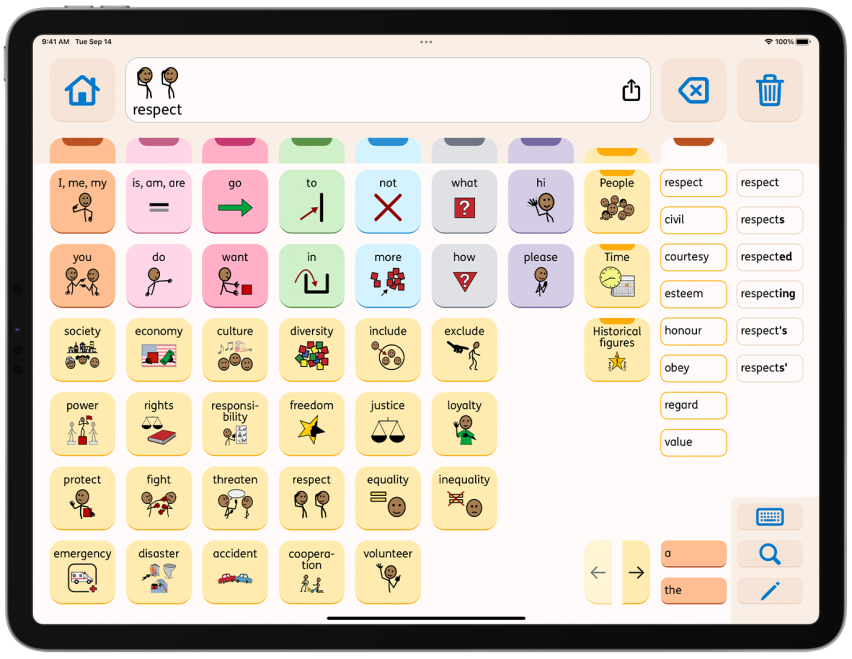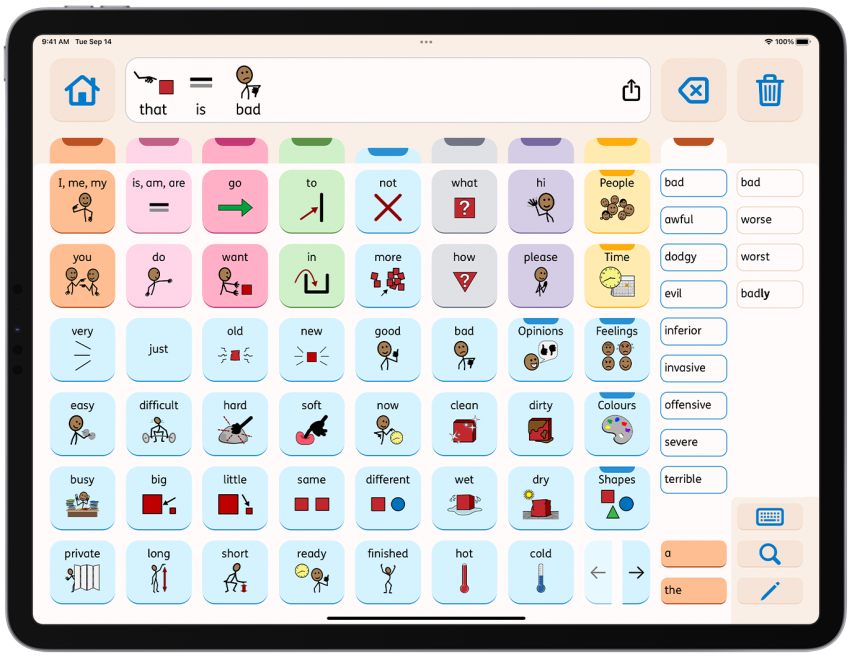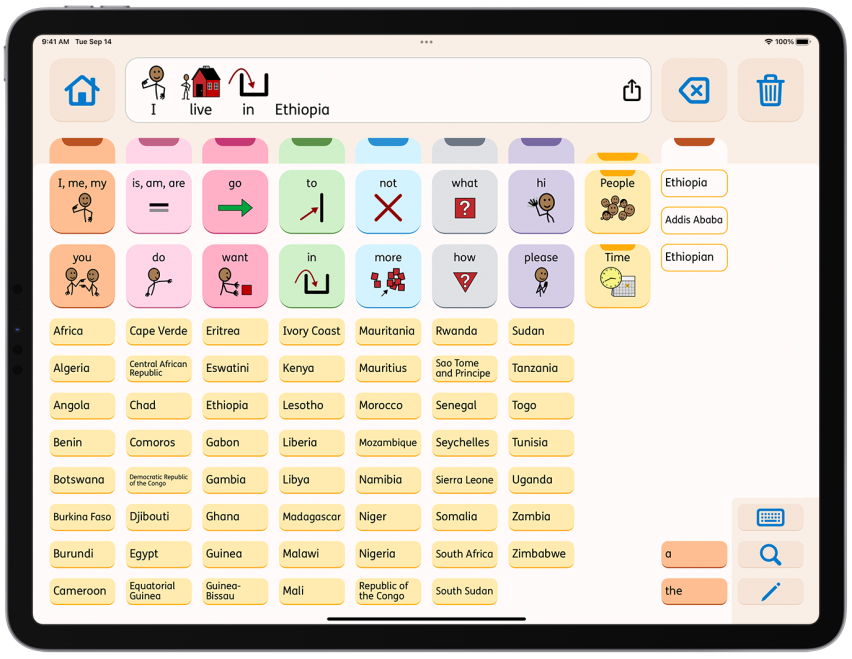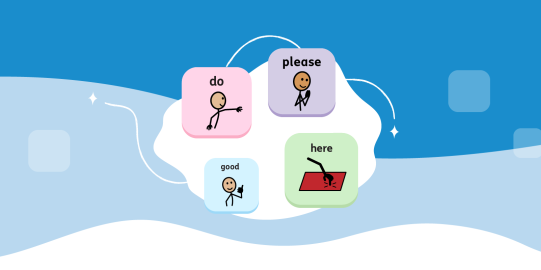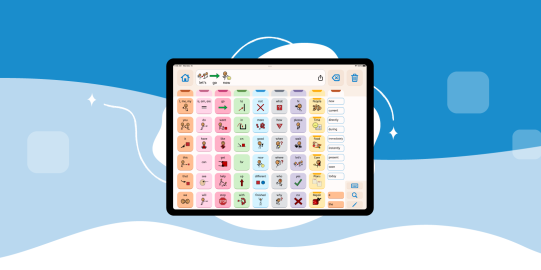(Updated February 14, 2024)
Buttons with symbols
Graphic symbols are an essential support for many AAC users. People who cannot yet read can learn to recognize the symbol and communicate the word. Many people who are literate find that graphic symbols are fast and efficient. Some AAC users who can spell fluently say that graphic symbols reduce the cognitive load of communication when under stress. Symbols let them rely on symbol recognition instead of generating words. Proloquo’s Crescendo Evolution™ vocabulary comes pre-programmed with over 4,500 buttons with graphic symbols. There are three reasons why a button might have a symbol.
First words
Words that emerge early in language development have been symbolized in Proloquo. Our intent was to symbolize the common words that children learn before they become literate. We relied on multiple fields of research to identify these words, including a wide variety of word lists generated from language samples of young children, children acquiring English as a second language, and children with a range of disabilities.
High-frequency words
We symbolized words used most often by most people. We emphasized content words (the words that carry the meaning in a sentence) such as nouns, verbs, and descriptors. We used anonymous data from tens of thousands of AAC users, including beginners to the most advanced. We also used research on the word frequency of English speakers in general.
Conceptually important words
Some words express an important idea, but are not used frequently. These words are essential to participate in the school curriculum or broader community, even if they aren’t used in daily conversation by most people. Important concept words include respect, privacy, or responsibility. We relied on vocabulary research and national school curriculums to identify these words.

